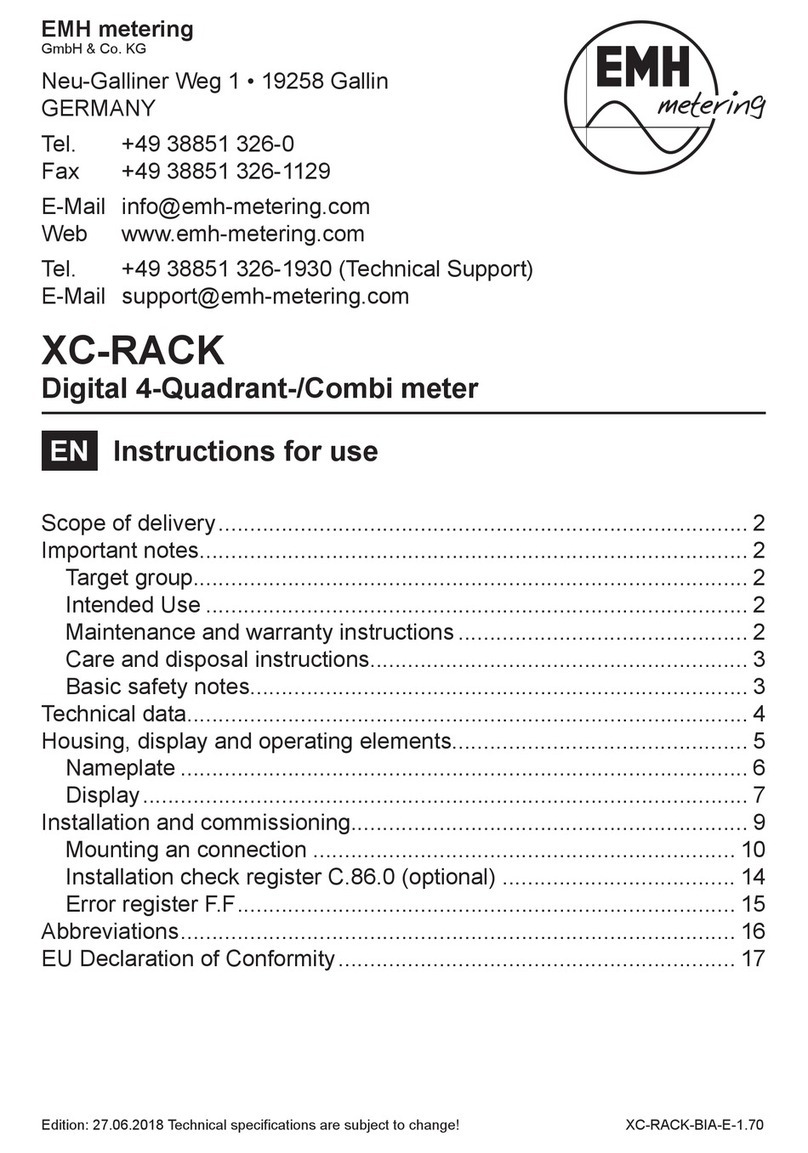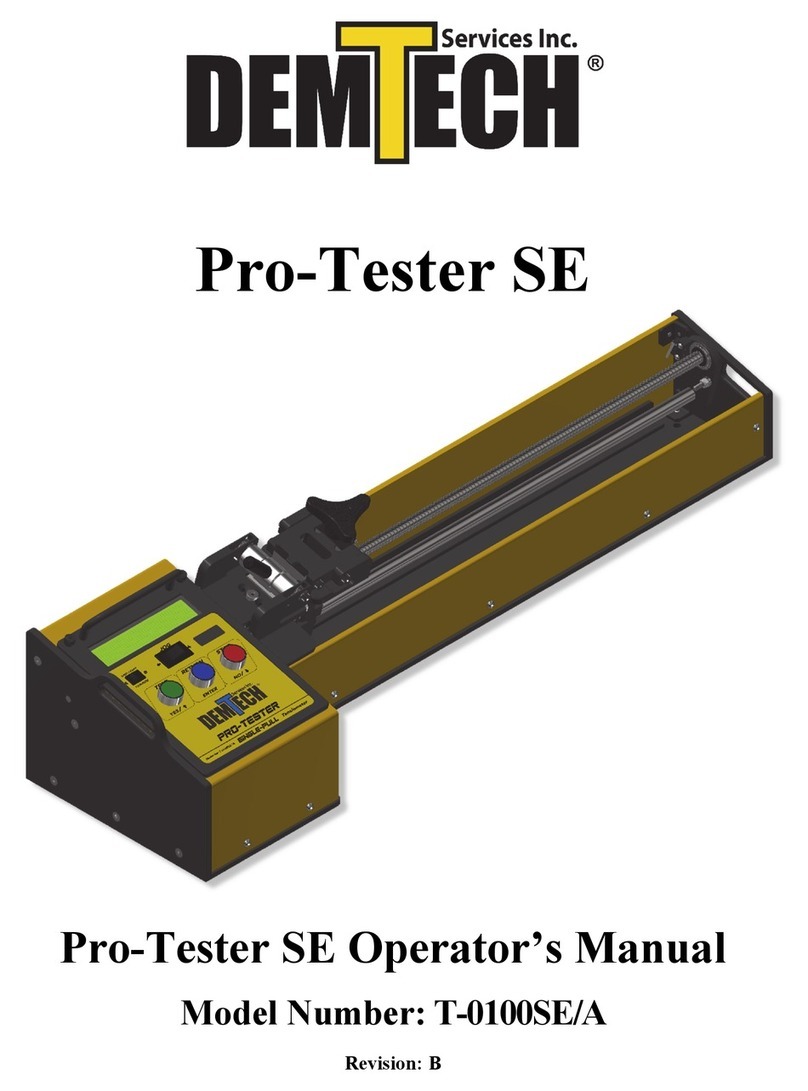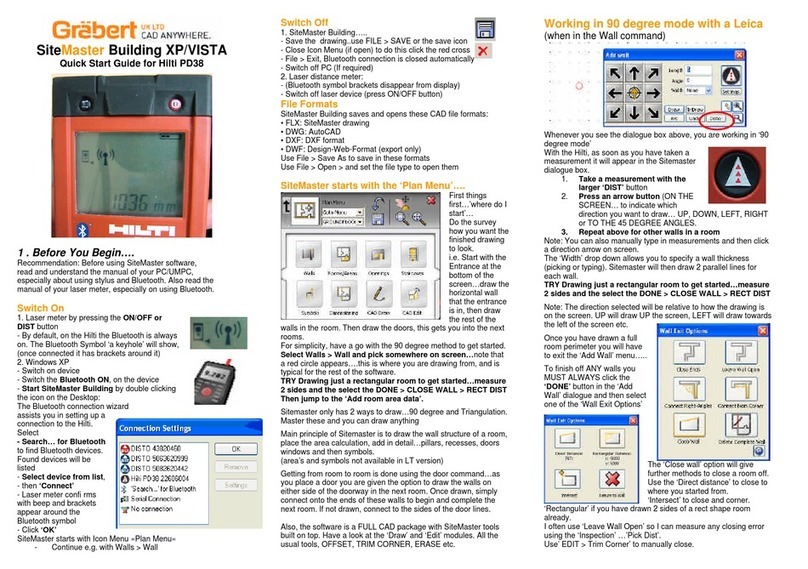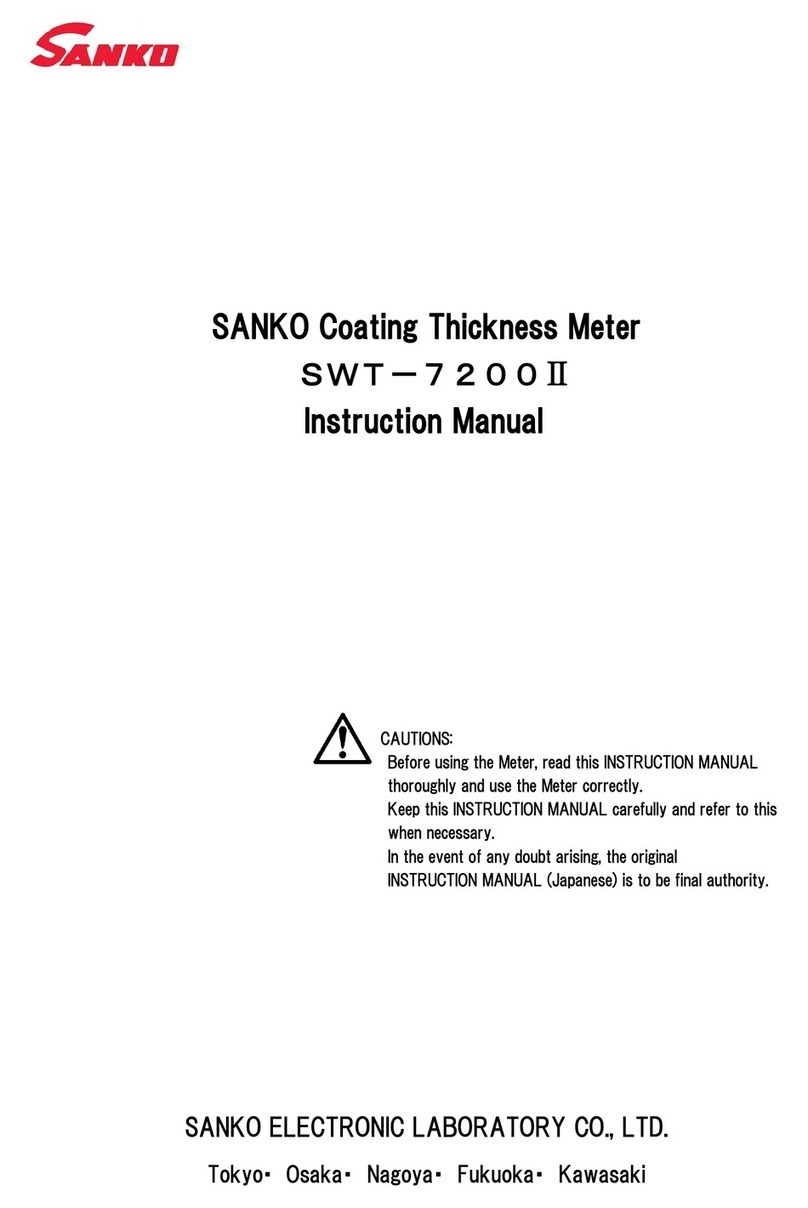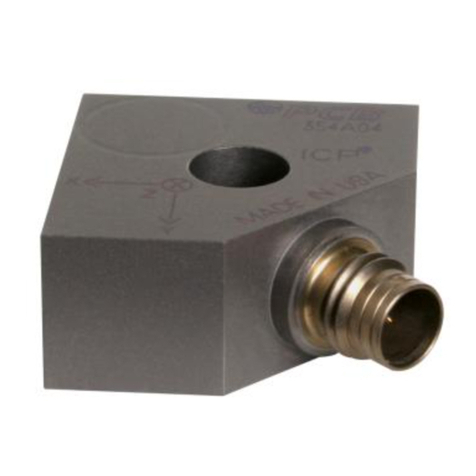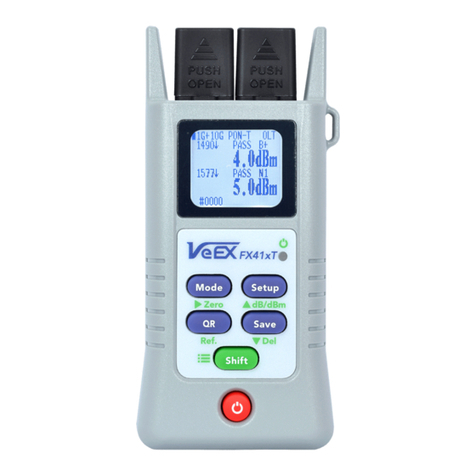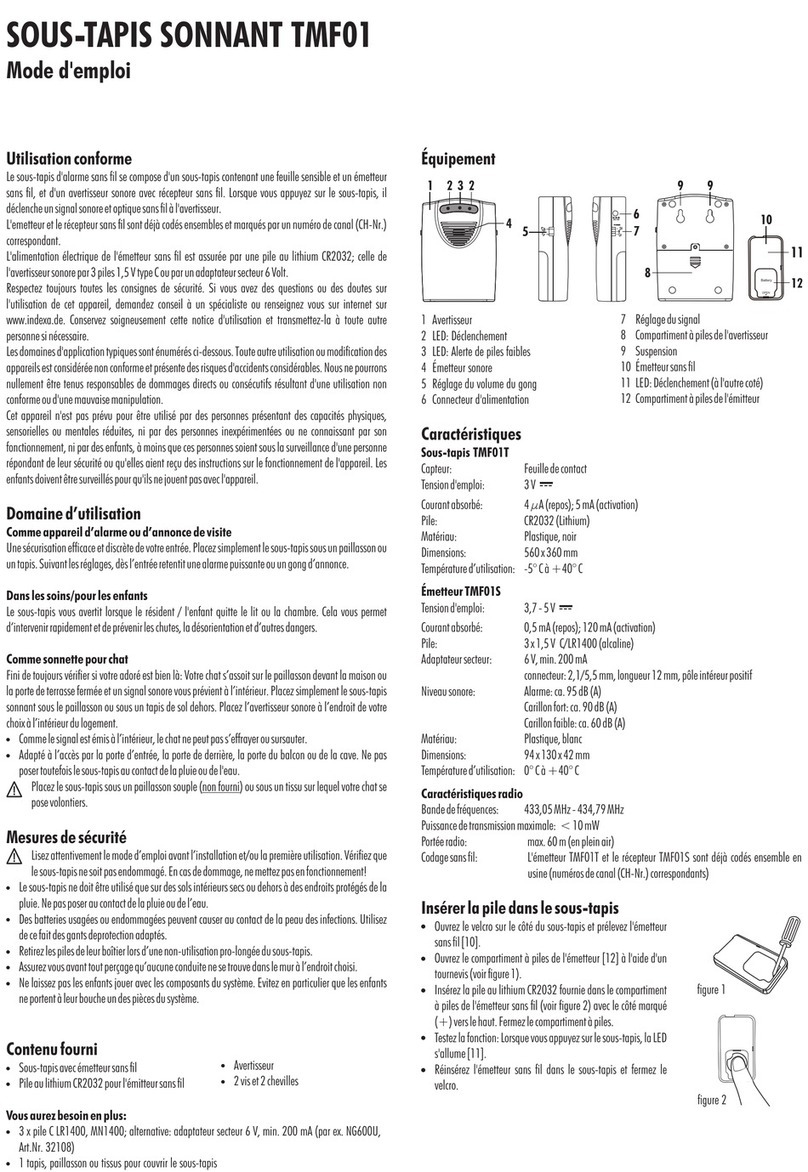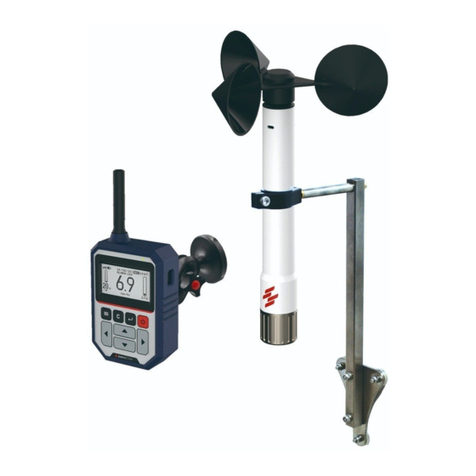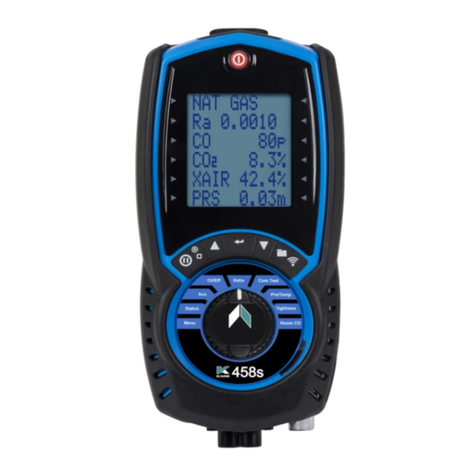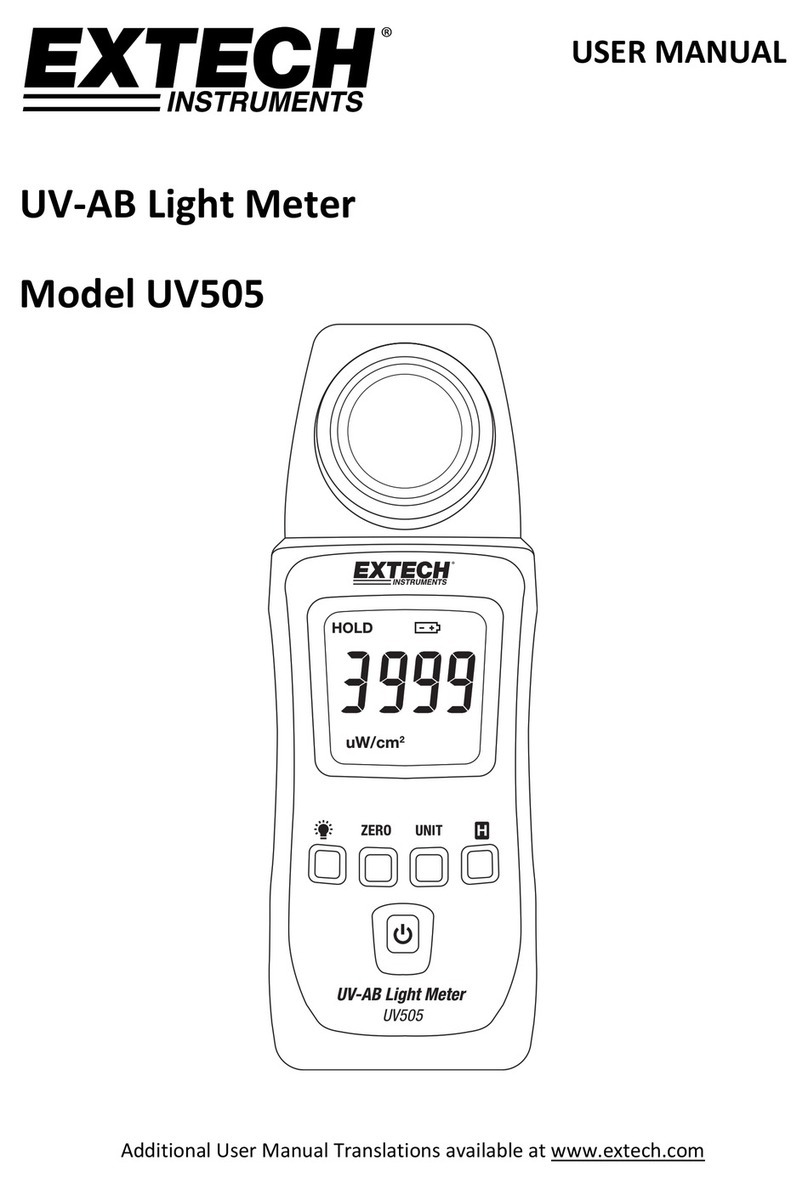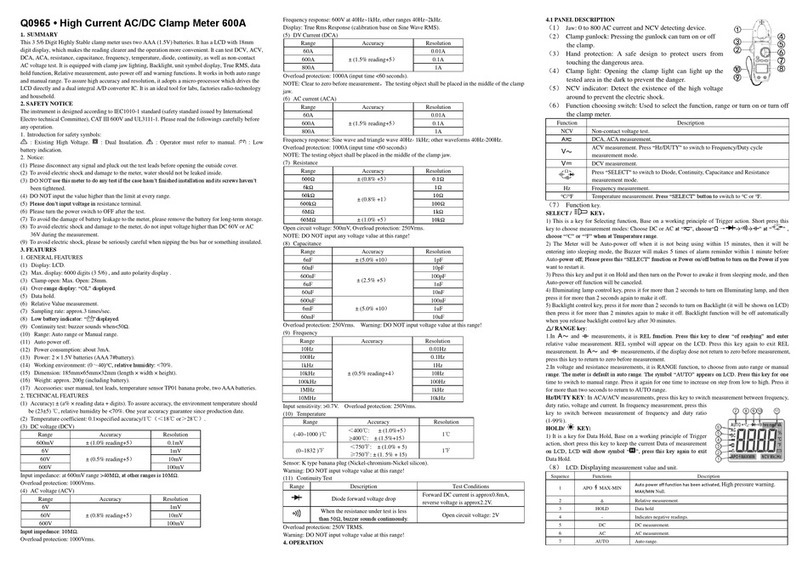EMH ITZ Guide

Edition: 25.11.2008 ITZ-PHB-E-1.00
Product manual for the
digital tariff meter ITZ
Installation I Device description I Operation

2
All of the contents published in this manual are copyright. Translating,
reprinting, duplicating and also saving of this manual in data processors
requires the exclusive permission from EMH.
All of the trademarks named in this manual are the property of EMH
Elektrizitätszähler GmbH & Co KG or the respective title holders.
EMH Elektrizitätszähler GmbH & Co KG is certified accord. to DIN ISO
9001:2000 and continually endeavours to improve their products
The contents of this manual and the technical specifications can be extended,
altered or removed without prior notice.
The description of the product specifications in this manual does not represent
part of a contract.
© 2007-2008 EMH Elektrizitätszähler GmbH & Co KG. All rights reserved.
If you have any questions or inspirations you can contact us at:
EMH Elektrizitätszähler
GmbH & Co KG
Südring 5
19243 Wittenburg
GERMANY
Tel.: +49 38852 645-0
Fax: +49 38852 645-129
Web: www.emh-meter.de

3
Contents page
1 Prologue.........................................................................................................6
1.1 Safety tips........................................................................................................6
1.2 Maintenance- and guarantee tips ....................................................................6
2 Mounting and installation .............................................................................7
2.1 Mounting the meter..........................................................................................7
2.2 Connecting the meter ......................................................................................7
2.3 Terminal blocks................................................................................................8
2.3.1 Transformer operated meter............................................................................8
2.3.2 Direct connected meter 60 A ...........................................................................8
2.3.3 Direct connected meter 100 A .........................................................................9
3 General features ..........................................................................................10
4 Standards and regulations .........................................................................11
5 Housing-, operating- and display elements ..............................................12
6 Technical description..................................................................................13
6.1 Technical data ...............................................................................................13
6.2 Functional circuit diagram..............................................................................14
6.3 Tariff switching clock......................................................................................14
6.4 Data interfaces...............................................................................................15
6.4.1 Optical data interface D0 ..............................................................................15
6.4.2 Electrical data interface RS232 .....................................................................15
6.4.3 Electrical data interface RS485 .....................................................................16
6.4.4 Electrical data interface CL0 (CS)..................................................................17
6.4.5 raconet radio interface...................................................................................17
6.5 Inputs.............................................................................................................18
6.6 Outputs..........................................................................................................18
6.7 Housing .........................................................................................................18
6.7.1 Baseplate.......................................................................................................18
6.7.2 Sealable meter cover.....................................................................................19
6.7.3 Sealable terminal cover.................................................................................19
7 Operating the meter.....................................................................................20
7.1 Operation modes...........................................................................................20
7.1.1 Parameter status (PAR-Status) .....................................................................20
7.1.2 Test mode......................................................................................................20
7.1.3 Standard operation mode ..............................................................................20
7.1.3.1 Standard display............................................................................................20
7.1.3.2 Error status display........................................................................................20
7.2 Display...........................................................................................................21
7.2.1 Installation error recognition ..........................................................................22
7.2.2 Manipulation recognition................................................................................25
7.3 Display control...............................................................................................27
7.3.1 Display control (Firmware 4.XX)....................................................................27
7.3.2 Display control (Firmware 5.XX and 6.XX) ....................................................28
8 Special features...........................................................................................29
8.1 Energy registration.........................................................................................29
8.2 Registration of instantaneous values.............................................................29
8.3 Measuring of the maximum demand..............................................................29
9 Meter readout...............................................................................................30
9.1 Communication software...............................................................................30
10 Appendix ......................................................................................................31
10.1 OBIS (Object-Identification-System)..............................................................31
10.2 EC Declaration of conformity.........................................................................33

4
Figure index
Table 1: Housing- and display elements.........................................................................12
Table 2: Technical data ..................................................................................................13
Table 3: Specifications of RS232....................................................................................15
Table 4: Specifications of RS485....................................................................................16
Table 5: Specifications of CL0........................................................................................17
Table 6: Specifications of inputs.....................................................................................18
Table 7: Specifications of outputs...................................................................................18
Table 8: Elements of the display.....................................................................................21
Table 9: OBIS-codes......................................................................................................32
Table index
Table 1: Housing- and display elements.........................................................................12
Table 2: Technical data ..................................................................................................13
Table 3: Specifications of RS232....................................................................................15
Table 4: Specifications of RS485....................................................................................16
Table 5: Specifications of CL0........................................................................................17
Table 6: Specifications of inputs.....................................................................................18
Table 7: Specifications of outputs...................................................................................18
Table 8: Elements of the display.....................................................................................21
Table 9: OBIS-codes......................................................................................................32

5
Abbreviations
A Active energy
+A Positive active energy (customer imports from utility)
-A Negative active energy (customer exports to utility)
lAl Measuring of absolute value of A
Cl. Accuracy class
DIN Deutsches Institut für Normung e.V.
(German Institute for standards)
EN European standards
EVU Utility
IEC International Electromechanical Commission
Imp. Impulse
Imp./kWh Impulse per kWh
Imp./kvarh Impulse per kvarh
L1, L2, L3 External conductor
LED Light Emitting Diode
MP Measuring period (only for maximum demand measuring)
N Neutral conductor
P Active power
+P Positive active power (customer imports from utility)
-P Negative active power (customer exports to utility)
PTB PTB (German certified body)
Q Reactive power
+Q Positive reactive power
+R Positive reactive energy
-R Negative reactive energy (customer exports to utility)
lRl Measuring of absolute value of R
RTC Real Time Clock
S0 Interface accord. to DIN 43 864
raconet radio readout system of EMH

6
1 Prologue
In this manual, all design variants of the ITZ meter are described. Please note, that
the meters can be designed differently regarding for example configuration, interfaces,
in-/outputs etc. It is therefore possible that meter features are described in this manual
which do not apply to the meter(s) used by you.
1.1 Safety tips
The meters are to be used exclusively for measuring electrical energy and must only
be operated within the specified technical data (see nameplate).
When installing or changing the meter the conductor to which the meter is connected
must be de-energised. Only the intended screw terminals may be used for this.
Contact of parts under voltage is extremely dangerous. Therefore the relevant back-up
fuse is to be removed and stored so that other people cannot insert this unnoticed.
Before opening the meter the secondary circuit to the current transformer must be short
circuited. The high voltage on the current transformer is extremely dangerous and
destroys the current transformer.
With incorrect meter installation the S0-inputs can lead to line voltage.
Attention: Danger!
The local standards, guidelines, regulations and instructions are to be obeyed.
Only authorised personnel are permitted to install the electricity meters.
1.2 Maintenance- and guarantee tips
The meter is maintenance-free. With damages (e.g. due to transportation, storing) no
repairs may be carried out independently. As soon as the meter is opened, the
guarantee claims cease. The same applies in case the defect can be traced back to
external influences (e.g. lightning, water, fire, extreme temperatures and weather
conditions, improper or negligent use or treatment).

7
2Mounting and installation
2.1 Mounting the meter
Meters form the series ITZ are suitable for wall mounting in accordance with
DIN 43 857-2.
Figure 1: Meter dimensions
2.2 Connecting the meter
When connecting the meter it is very important to take notice of the connection diagram
which can be found in the terminal cover and also in the delivery documents:
Example:
Figure 2: Connection diagram
- 3x230/400 V; 5(60) A
- 1 control input (ES)
- 1 output Opto-MOSFET (HR)
- Electrical interface RS485
Note: Direct connected meters are to be fused against short circuits with a back-up fuse
of 63 A or 100 A and transformer operated meters in the voltage circuit with a back-up
fuse of < 10 A.

8
2.3 Terminal blocks
2.3.1 Transformer operated meter
Current
terminals
Voltage
terminals
Auxiliary
terminals
Terminal dimensions
W x H (d) mm
4.6
4.6
9-block: 3.2 x 3
12-block: 3
Max. connection-
cross section (mm²)
6
6
2.5
Maximum torques
for terminals (Nm)
1.5
1.8
0.5
Head/size of thread
slot/M4
PZ1/M4
slot/M3
Figure 3: Terminal block for transformer operated meter
2.3.2 Direct connected meter 60 A
Current terminals
Voltage and auxiliary
terminals
Terminal dimensions
W x H (d) mm
6.5
3
Max. connection-
cross section (mm²)
16
2.5
Maximum torques
for terminals (Nm)
2.7
0.5
Head/size of thread
PZ2/M5
slot/M3
Figure 4: Terminal block for direct connected meter 60 A
In normal operation the
voltage bridges are closed
and are only opened for
testing the device!
opened
closed

9
2.3.3 Direct connected meter 100 A
Current terminals
Voltage and auxiliary
terminals
Terminal dimensions
W x H (d) mm
9,5
3
Max. connection-
cross section (mm²)
35
2,5
Maximum torques
for terminals (Nm)
3,1
0,5
Head/size of thread
PZ2/M6
slot/M3
Figure 5: Terminal block for direct connected meter 100 A
For testing the device the
voltage path is interrupted by
the path separator. With
normal operation the path
separator is removed.

10
3General features
-Direct connected or transformer operated meter for measuring active energy
-Registration of the energy can be parameterised at the factory as follows:
-Measuring of +A with non-reverse ratchet
-Measuring of +A and -A
-Measuring of absolute value of A
-Measuring of +R with non-reverse ratchet
-Measuring of +R and -R
-Measuring of absolute value of R
-Meter designs:
Voltages
3x230/400 V
3x220/380 V
3x58/100 V
3x63/110 V
3x115/200 V
3x127/220 V
3x132/230 V
Currents
5(60) A
5(85) A
5(100)A
10(60) A
10(65) A
10(100) A
5ll1 A
1(6) A
5 A
-Max. 4 tariff registers + 1 tariffless register, 15 pre-values each for every measuring
type (Firmware 6.XX)
-1 maximum register (24 h continuously active), 15 pre-values a for every measuring
type (Firmware 6.XX)
-Impulse output for the transfer of energy proportional impulses
-Test-LED for measuring device test
-Data interfaces:
-Optical data interface D0
-Electrical data interface CL0, RS485 or RS232
-raconet radio interface
-Real time clock with calendar function
-Manipulation recognition

11
4Standards and regulations
DIN EN 50470-1 Electricity metering equipment (a.c.) - Part 1: General
requirements, tests and test conditions - Metering
equipment (class indexes A, B and C)
DIN EN 50470-3 Electricity metering equipment (a.c.) - Part 3: Particular
requirements - Static meters for active energy (class
indexes A, B and C)
DIN EN 60529 Degrees of protection provided by enclosures (IP-Code)
(IEC 60529:1989 + A1:1999)
DIN EN 61000… Electromagnetic compatibility (EMC)
DIN EN 61038 Time switches for tariff and load control
(IEC 61038:1990, amendment)
DIN EN 62052-11 Electricity metering equipment (AC) - General requirements,
test and test conditions - Part 11: Metering equipment
(IEC 62052-11:2003)
DIN EN 62053-21 Electricity metering equipment (a.c.) - Particular
Requirements - Part 21: Static meters for active energy
(classes 1 and 2) (IEC 62053-21:2003)
DIN EN 62053-23 Electricity metering equipment (a.c.) - Particular
Requirements - Part 23: Static meters for reactive energy
(classes 2 and 3) (IEC 62053-23:2003)
DIN EN 62056-61 Electricity measuring - Data exchange for meter reading,
tariff and load control - Part 61: Object identification system
OBIS (IEC 62056-61:2002)
ITU-T V.11 Electrical characteristics for balanced double-current
interchange circuits operating at data signaling rates up to
10 Mbit/s
TIA/EIA-485 Electrical characteristics of generators and receivers for use
in balanced digital multipoint systems
ITU-T V.24 List of definitions for interchange circuits between data
terminal equipment (DTE) and data circuit terminating
equipment (DCE).
ITU-T V.28 Electrical characteristics for unbalanced double-current
interchange circuits
VDEW-Lastenheft 2.1 Elektronische Lastgangzähler (Electronic load profile meter)

12
5Housing-, operating- and display elements
Figure 6: Housing-, operating- and display elements
No.
Description
Function
1
Meter cover
---
2
Test-LED
Meter test
3
LC-display
Display of measured values and
status information
4
Parameterisation button
Operation of this button transfers
the meter into the parameterization
mode (found under the meter cover
5
Mechanical call-up button
Call-up of the display contents
in the LC-display
6
Sealing screw
Fastening the terminal cover
7
Terminal cover
Covering for the terminal block
8
Optical call-up button
Call-up of the display contents
in the LC-display
9
Optical data interface D0
For communication between the
meter and a readout device
10
Mechanical reset button
Carrying out certain actions such
as setting the clock etc.
11
Manipulation recognition
Recognition of opening the terminal
cover and recognition of magnetic
fields (under the meter cover
12
Sealing screw
Fastening the terminal cover to
the terminal block
Table 1: Housing- and display elements
2
9
10
11
3
4
5
8
1
6
7
12

13
6Technical description
6.1 Technical data
Voltage
4-wire meter
3x230/400 V, 3x220/380 V, 3x58/100 V, 3x63/110 V,
3x115/200 V, 3x127/220 V, 3x132/230 V
Current
5(60) A, 5(85) A, 5(100) A, 10(60) A, 10(65) A, 10(100) A;
5II1 A, 1(6) A, 5 A
Frequency
50 Hz, 60 Hz
Accuracy
active energy
Cl. A or Cl. B acc. to DIN EN 50470-1, -3
(Cl. 2 or Cl. 1 acc. to IEC 62053-21)
reactive energy
Cl. 3 or Cl. 2 acc. to IEC 62053-23
Measuring types
active energy
+A (with non-reverse ratchet), Option: +A/-A or IAI
reactive energy
+R (with non-reverse ratchet), Option: +R/-R or IRI
Meter constants
LED (Imp./kWh)
500 - 40 000 (depending on meter type)
output (Imp./kWh)
250 - 20 000 (depending on meter type)
Energy registers
maximum number (FW 6.XX)
4 tariff registers + 1 tariff less register, 15 pre-values each for
every measuring type
Maximum registers
maximum number (FW 6.XX)
1 maximum register (24 h continuously active) for for every
measuring type
measuring period
5, 6, 10, 12, 15, 20, 30, 60 min (parameterable)
Real Time Clock
accuracy
within 5ppm
synchronization
via data interfaces or control input
running reserve battery/capacitor
> 20 years/> 7 days
Control inputs
maximum number
3 pieces
S0
1 piece
system voltage
max. 2 pieces
Data retention time
without voltage in the EEPROM, at least 20 years
Display
type
LCD
digit size
8 x 4 mm (value range)
additional display
status information about phase failure, phase sequence, tariff,
meter start-up, manipulation and running reserve of RTC
meter start-up, manipulation and running reserve of RTC
Operation
mechanical buttons
for display call-up and reset (sealable)
optical sensor
for display call-up
radio module
functions
meter remote readout via bi-directional communication,
(integrated)
online mode, transferring of commands, automatic network
build-up etc.
transmitting frequency
868 MHz in license free ISM-band
certification
acc. to DIN EN 300220, CE-mark
Data interfaces
optical data interface
optical data interface D0 (Mode C up to 4800 baud)
electrical data interface
RS485, RS232 or CL0 (fixed or Mode C up to 9600 baud)
data protocol
IEC 62056-21
Outputs
maximum number
3 pieces (S0, Opto-MOSFET, relay or high load relay)
Energy supply
switched-mode power supply
3-phase from the measuring voltage
mains buffering time
> 200 ms
Power consumption
per phase (Basic Meter)
voltage path
< 1.3 VA/< 0.8 W
current path
< 0.03 VA
EMC characteristics
isolation resistance
isolation: 4 kV AC, 50 Hz, 1 min
surge voltage
EMC: 4 kV, impulse 1.2/50 μs, 2 Ω
ISO: 6 kV, impulse 1.2/50 μs, 500 Ω (measuring paths
and in- and outputs)
resistance against HF-fields
30 V/m (under load)
Temperature range
operating/limit range
-25°C ...+60°C/-40°C ...+70°C
storage and Transport
-40°C ...+70°C
Relative humidity
95% acc. to IEC 62052-11, EN 50470-1 and IEC 60068-2-30
Housing
dimensions
approx. 178 x 328 x 61 (W x H x D) mm
class of protection
2
degree of protection housing/terminals
IP 51/IP 31
housing material
polycarbonate glass-fibre-reinforced, without halogen, recyclable
fire characteristics
acc. to DIN EN 62052-11
weight
up to 60 A approx. 1.35 kg, up to 100 A approx. 1.6 kg
Table 2: Technical data

14
6.2 Functional circuit diagram
Figure 7: Functional circuit diagram
6.3 Tariff switching clock
The tariff switching clock works on the basis of a Real Time Clock (RTC) and can be set
via the D0-interface. The accuracy is within 5 ppm. The tariff switching clock gives the
time when the tariff switching should take place. Tariff switching can be parameterised,
one tariff is always active. External tariff control is possible; thereby the internal tariff
control is automatically deactivated. The ITZ has separate daily switching clocks for
weekdays and holidays.
The following day types are supported:
a) Monday - Friday
b) Saturday
c) Sunday
d) Holidays
Setting the date and time
The date and time can be set with the software EMH-COM or EMH-COMBI-MASTER
2000 either via the optical- or the electrical interface. In Germany, according to the PTB
requirements, the latter may only be carried out once after ending the parameter status
or after voltage return.
Synchronisation of the Real Time Clock takes place via:
a) the internal quartz or
b) the synchronisation input.
Buffering of the Real Time Clock takes place
a) with battery or
b) with capacitor.
The battery guarantees a running reserve of > 10 years, the capacitor of > 7 days.
With a completely discharged capacitor the charging time is approx. 20 minutes after
applying the phase voltage (90% voltage). If the running reserve is exhausted then in the
display the relevant symbol is displayed (see page 21). After voltage return the Real
Time Clock is set to the time of the network power failure. Furthermore, the energy is
registered in a fixed register (depending on the configuration 1.8.0, 1.8.1, 1.8.2, 1.8.3 or
1.8.4).

15
6.4 Data interfaces
The data readout takes place according to 62056-21 via:
optical data interface D0
electrical data interface (RS232, RS485 or CL0)
raconet radio interface
6.4.1 Optical data interface D0
The D0-interface is designed according to IEC 62056-21 with Mode C. The following
baud rates can be set: 300, 1200, 2400 or 4800 baud.
6.4.2 Electrical data interface RS232
The electrical interface (galvanically de-coupled) is found at the additional terminals
under the sealable terminal cover (see connection diagram).
The electrical interface RS232 is a symmetrical two-wire interface designed according to
ITU-T V.24 and ITU-T V.28. The distance between the readout device and the meter
may not exceed 15 m.
Features
Number of connected meters
1
Maximum cable length
up to 15 m
Data transmission rate
300 ... 9600 baud
Signal according to ITU-T V.28
logical “1”
- 3 V to - 15 V
logical “0”
+ 3 V to + 15 V
Table 3: Specifications of RS232

16
6.4.3 Electrical data interface RS485
The electrical interface (galvanically de-coupled) is found at the additional terminals
under the sealable terminal cover (see connection diagram).
The electrical interface RS485 is a symmetrical two wire interface and is designed
in accordance with TIA/EIA-485 / ITU-T V.11. Up to 32 meters can be connected
to a meter modem with RS485-interface. The distance between the readout device and
the meter may not exceed 1,000 m.
Features
Number of connected meters
up to 32
Maximum cable length
up to 1,000 m
Data transmission rate
300 ... 9600 baud
Signal according to
TIA/EIA-485 / ITU-T V.11
logical “1”
-0.3 V to -6 V
logical “0”
+0.3 V to + 6 V
Table 4: Specifications of RS485
RS485 Bus
Up to 32 devices can be operated by one RS485 Bus. Usually in a bus system the first
and last device should be terminated with a terminating resistor between wire „A“ and
„B“ in order to eliminate conduction reflections.
Bus structure:
Figure 8: System layout - RS485-two wire bus
Detail: Please note:
The terminating resistor may only be
installed at the first and last device.
See detail
See detail
B
A
B
A
B
A
. . .
Device 1 Device 2 Device 32
RS485-two wire bus
RS485
23 24 25
A
B
RTERM= 120
Shield

17
6.4.4 Electrical data interface CL0 (CS)
The electrical interface CL0 (galvanically de-coupled) is found at the additional terminal
under the sealable terminal cover (see Figure 3 on page 8).
The CL0 interface conforms to DIN 66348, Part 1. It is a passive two wire interface, i.e.
possesses no own power source. Data is transmitted as mark/space at a nominal current
of 20 mA. For that reason, it is also called a 20 mA current interface.
The voltage drop of the series switched transmitters and receiver in the meter is about
4 V. Thus a maximum of four meter outputs can be switched in series and operated by
one modem. The meters can be addressed and called up specifically. The CL0 interface
can be used for data transmission up to 1,000 m.
General features
Number of connected meters
4
Maximum cable length
up to 1,000 m
Data transmission rate
300 ... 9600 baud
Electrical features
Signal
one
zero
Sender
11 mA
≤ 2.5 mA
Receiver
9 mA
≤ 3 mA
Permitted voltage drops
Sender
max. 2 V
Receiver
max. 3 V
Maximum values
Current
30 mA (short circuit)
Voltage
30 V (open current circuit)
Table 5: Specifications of CL0
6.4.5 raconet radio interface
The raconet radio interface enables a wireless bi-directional communication like data
readout and transmission of commands between meter and data collector.
The data transmission takes places with 868 MHz in the licence free and regulated ISM-
Band.
The antenna of the radio interface can be designed as integrated antenna or as housing
antenna.
Further information for raconet readout system you can find in separately documents.

18
6.5 Inputs
The ITZ can be equipped with max. 3 inputs:
- 2 control inputs with low- or system voltage (potential free) and
- 1 S0 input (not potential free)
Specifications
S0 input
max. 27 V DC, 27 mA (active)
Low voltage
5..40 V DC
System voltage
58..230 V
Table 6: Specifications of inputs
6.6 Outputs
The ITZ can be equipped with a maximum of 3 outputs:
- max. 3 as S0 output according to DIN 43 864 or
- max. 2 relays (make contact [NO]) resp. a high load relay (make contact [NO]) or
- max. 3 as Opto-MOSFET output (break contact [NC] or make contact [NO])
Specifications
S0 output
Impulse time 20-500 ms (25-1 Hz) in 20 ms steps;
energy impulses 100-10,000 Imp./kWh;
max. 27 V DC, 27 mA (passive)
Relay
max. 250 V AC/DC, 100 mA
High load relay
max. 250 V AC/DC, 10 A
Opto-MOSFET
max. 250 V AC/DC, 100 mA
Table 7: Specifications of outputs
6.7 Housing
6.7.1 Baseplate
The baseplate is made of grey polycarbonate with the upper hanging eye-hook and the
two lower hanging eye-hooks.
Figure 9: Baseplate

19
6.7.2 Sealable meter cover
The meter cover is made of crystal clear polycarbonate. The window area is transparent
and the remaining cover surface has an eroded structure. The meter cover is hung at the
top of the baseplate and fastened at the bottom with two sealed screws.
Figure 10: Meter cover
6.7.3 Sealable terminal cover
The terminal cover is made of grey polycarbonate. It is screwed to the terminal block by
means of sealing screws. Inside the terminal cover there is a pin for manipulation
recognition. With this pin every attempt to remove the terminal cover is registered.
On the inside of the terminal block you can find the connection diagram.
Figure 11: Terminal block with the pin for manipulation recognition

20
7Operating the meter
7.1 Operation modes
7.1.1 Parameter status (PAR-Status)
The PAR-Status is used for configuration of the meter at the factory. For activation
of this mode press the PAR-Status button. This button is found on the meters main
PC-Board and is protected by a seal.
7.1.2 Test mode
In the test mode the resolution of the energy register is 100 times higher than the
resolution in the standard operation mode. This also applies for the readout table.
The test mode is also addressed via the write command 1.58.T(N) for active energy
and 3.58.T(N) for reactive energy.
„N“ = 1 means activate, „N“ = 0 means deactivate. „T“ stands for the number of the tariff
which is activated with the command.
Activation of the test mode is shown by the simultaneous flashing of the star symbol
and the exclamation mark in the display (see page 21). After 24 hours uninterrupted
operation the test mode is automatically deactivated.
7.1.3 Standard operation mode
When the meter is in normal operation then it is always in the standard operation mode.
7.1.3.1 Standard display
After meter installation and running through the display tests the meter is in the standard
display. With a multi tariff design, the energy value and the designation of the active tariff
are shown in the display.
With a two tariff meter with static display the energy value for high tariff is displayed in
the value area and the energy value for low tariff in the OBIS code area. Thereby the
digitness of the high tariff value is reduced from 8 to 7.
From every condition the display returns back to the standard display providing that the
display was not operated within the configured delay period (5 to 30 minutes).
7.1.3.2 Error status display
During operation of the meter a continual check takes place of the register data, the code
and also the checksum. If during the check an error is recognised then an error code is
shown in the display.
Table of contents
Other EMH Measuring Instrument manuals
Popular Measuring Instrument manuals by other brands
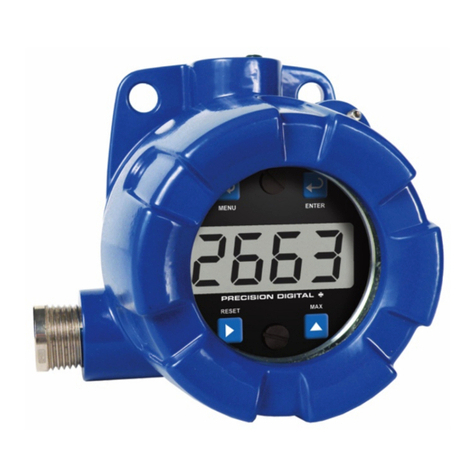
Precision Digital Corporation
Precision Digital Corporation PD663 instruction manual

PCB Piezotronics
PCB Piezotronics 352A74 Installation and operating manual
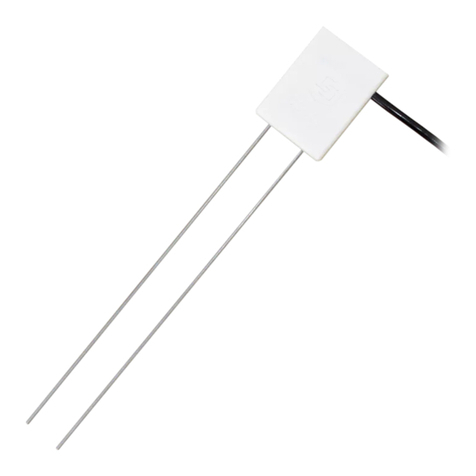
Campbell
Campbell CS616 instruction manual
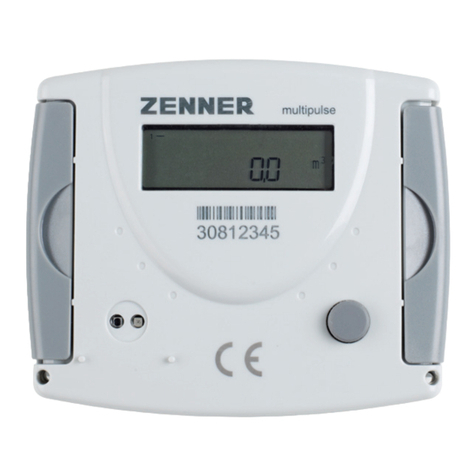
Zenner
Zenner multipulse Installation and operating manual
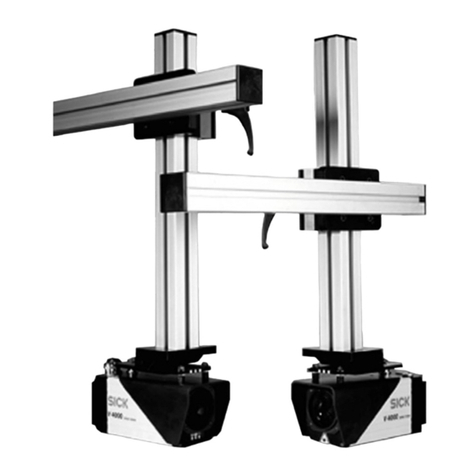
SICK
SICK Mounting kit 2 Mounting instructions
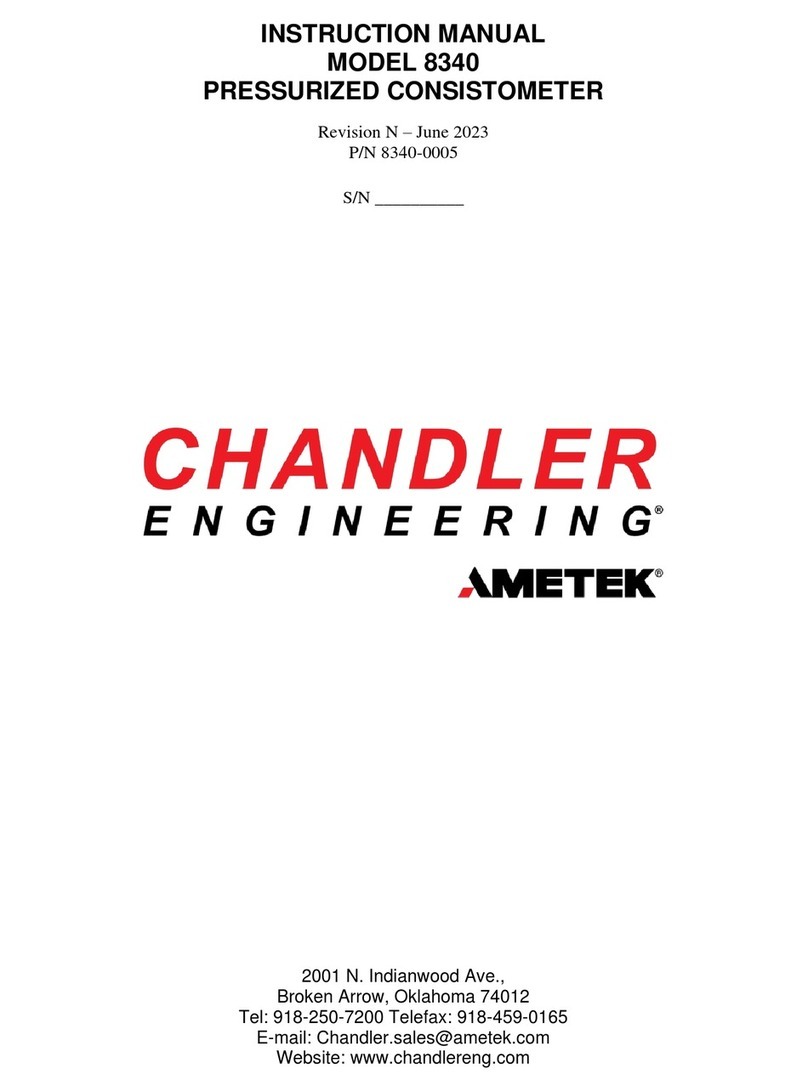
Ametek
Ametek Chandler Engineering 8340 instruction manual
